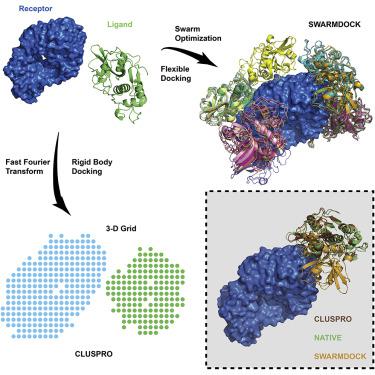Structure ( IF 5.7 ) Pub Date : 2020-07-09 , DOI: 10.1016/j.str.2020.06.006 Israel T Desta 1 , Kathryn A Porter 1 , Bing Xia 1 , Dima Kozakov 2 , Sandor Vajda 1

|
The development of fast Fourier transform (FFT) algorithms enabled the sampling of billions of complex conformations and thus revolutionized protein-protein docking. FFT-based methods are now widely available and have been used in hundreds of thousands of docking calculations. Although the methods perform “soft” docking, which allows for some overlap of component proteins, the rigid body assumption clearly introduces limitations on accuracy and reliability. In addition, the method can work only with energy expressions represented by sums of correlation functions. In this paper we use a well-established protein-protein docking benchmark set to evaluate the results of these limitations by focusing on the performance of the docking server ClusPro, which implements one of the best rigid body methods. Furthermore, we explore the theoretical limits of accuracy when using established energy terms for scoring, provide comparison with flexible docking algorithms, and review the historical performance of servers in the CAPRI docking experiment.
中文翻译:

刚体蛋白质-蛋白质对接的性能及其限制。
快速傅里叶变换 (FFT) 算法的发展使数十亿复杂构象的采样成为可能,从而彻底改变了蛋白质 - 蛋白质对接。基于 FFT 的方法现已广泛使用,并已用于数十万次对接计算。尽管这些方法执行“软”对接,允许组分蛋白质的一些重叠,但刚体假设显然会限制准确性和可靠性。此外,该方法仅适用于由相关函数之和表示的能量表达式。在本文中,我们使用完善的蛋白质-蛋白质对接基准集来评估这些限制的结果,重点是对接服务器 ClusPro 的性能,它实现了最好的刚体方法之一。此外,



























 京公网安备 11010802027423号
京公网安备 11010802027423号